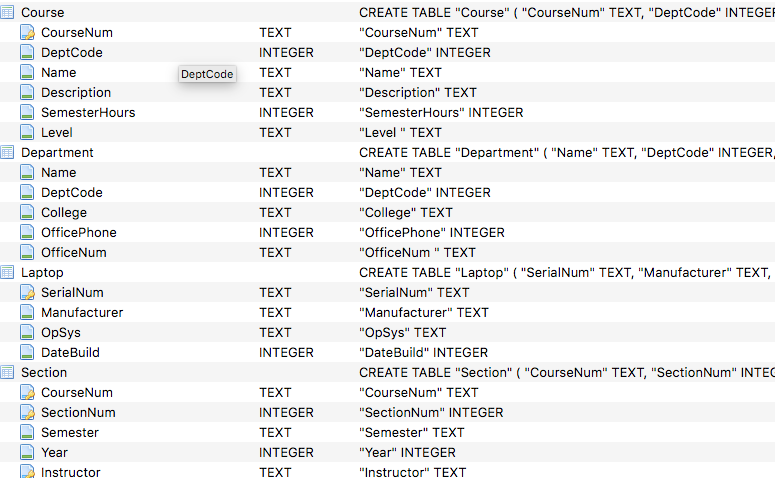
List names of tables matching a LIKE pattern.

List names of tables matching a LIKE pattern Creating a connection object using connect () method, sqliteConnection nnect SQLiteRetrievingdata. Show the current values for various settings Steps to Fetch all tables using SQLite3 in Python. If TABLE specified, only show tables matching LIKE pattern TABLEĬhange separator used by output mode and. If TABLE specified, only show indices for tables matching LIKE pattern TABLE Turn output mode suitable for EXPLAIN on or off. If TABLE specified, only dump tables matching LIKE pattern TABLE List names and files of attached databasesĭump the database in an SQL text format. The above command will display a list of various important SQLite dot commands, which are listed in the following table. Let's start with typing a simple sqlite3 command at command prompt which will provide you with SQLite command prompt where you will issue various SQLite commands.įor a listing of the available dot commands, you can enter ".help" any time. These commands are called SQLite dot commands and exception with these commands is that they should not be terminated by a semi-colon ( ).
#SQLITE LIST TABLES UPDATE#
Update Dec 2021: Since writing this article, SQLite has. Introduction Create a database List database connections Creating tables within a database. The second method gives you the option of returning both tables and views, or just tables, but only for the primary database. Creating and deleting databases and tables with SQLite. The first method returns all tables and views for all attached databases. The schema for a database is a description of all of the other tables, indexes, triggers, and views that are contained within the database. The above statement opened the database named chinook.db that locates in the c:\sqlite\db directory. Every SQLite database contains a single sqliteschema table that stores the schema for that database.

This chapter will take you through simple and useful commands used by SQLite programmers. Here are two ways to return a list of tables in all attached databases in SQLite. To show tables in a database using the sqlite command-line shell program, you follow these steps: First, open the database that you want to show the tables: sqlite3 c:\sqlite\db\chinook.db.


 0 kommentar(er)
0 kommentar(er)
